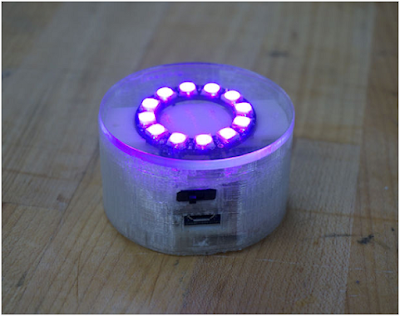I light the facility with a bed side of the glass as the project started. I have moved forward when I explored different uses in different contexts.
The glass case of bed:
Users need to wake up and drink water, he / she turns the glass. On glass flips, it is positioned at the bottom of the glass to the light thanks to the accelerometer. After lighting LEDs, in the glass in the dark from a pitcher to pour water becomes easier for the user. The glass is turned upside down when it is closed. In this case also protects the glass from dust and dirt.
For this scenario, a coloured light would be better. At the red light works well.
Other Scenarios:
It also houses two restaurants and a dinner during the time both tea light and the glass can be used as is. If it is used depends on the usage scenarios, Neo Pixels uses, desired color by using the USB port and the open source Arduino coding system (optimized) can be.
And also, can be fun at parties!
Materials and Tools:
- Materials:
- 1 Toyo Sasaki HS Stackable glass
- 1 Adafruit 5 V Pro Trinket
- 1 Adafruit Neo pixel ring
- A lithium -ion polymer battery - 3.7V 500mAh
- 1 Adafruit Pro Trinket Li Ion / Li Poly battery bag
- 1 Adafruit MMA8451 accelerometer
- A slide switch
- 1/8 " clear acrylic
- Transparent filament for 3D printing
- Glue
2. Tools:
- Maker Bolt Replica-tor 2
- Soldering iron
- Wire
Coding:
Before soldering the components together when I first breadboard Arduino UNO suggest you to try the code. If everything works correctly, you can switch to Adafruit Pro Trinket.
Soldering the Component:
Solder the components together as seen on the circuit diagram. Make sure that you keep wires long enough to give a little bit flexibility to your circuit so that you can embed it into your enclosure with ease.
3D Printing and Laser Cutting:
- For a better light diffusion should use transparent filament.
- Printed on standard resolution. Make sure that you have the support material.
- Laser Clear acrylic 1/8 " thickness of 2.3 " diameter circle cut.
Assembling of A Component:
- 3D printed embeds components in the enclosure. It can be a bit tricky.
- Everything that fits properly to ensure its place.
- Control switches and USB outputs. They work well; you can glue the enclosure from the top part acrylic.
- With the assembly of a part.
Final Enjoyment:
By using the Micro-USB output can be customized with infinite possibilities.
Have any suggestion or any query, please post here. And thanks a lot to pay attention for this post.
Have fun guys..!!!!










No comments:
Post a Comment